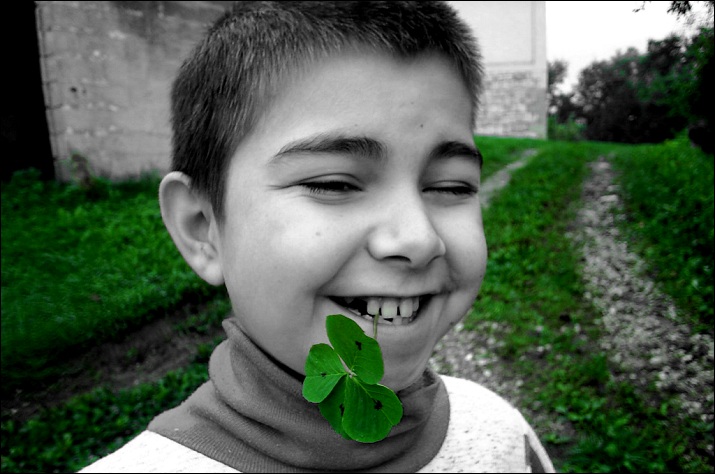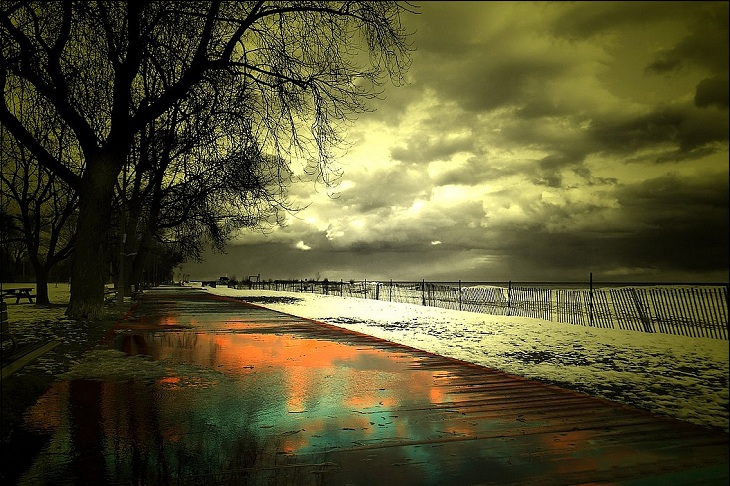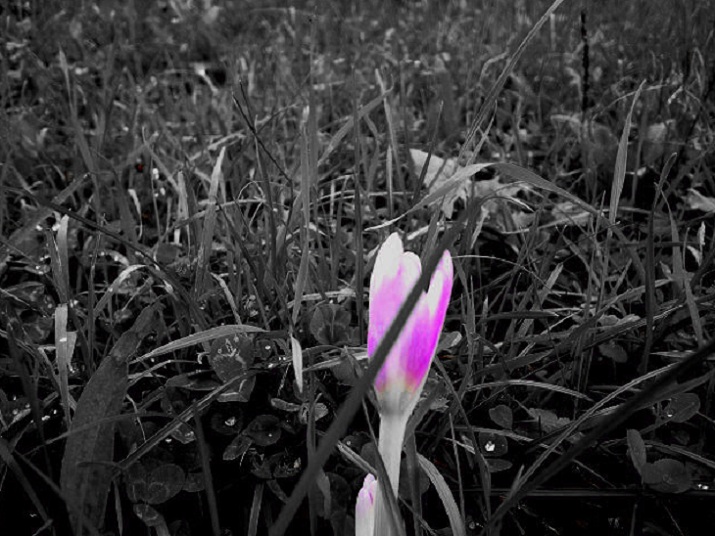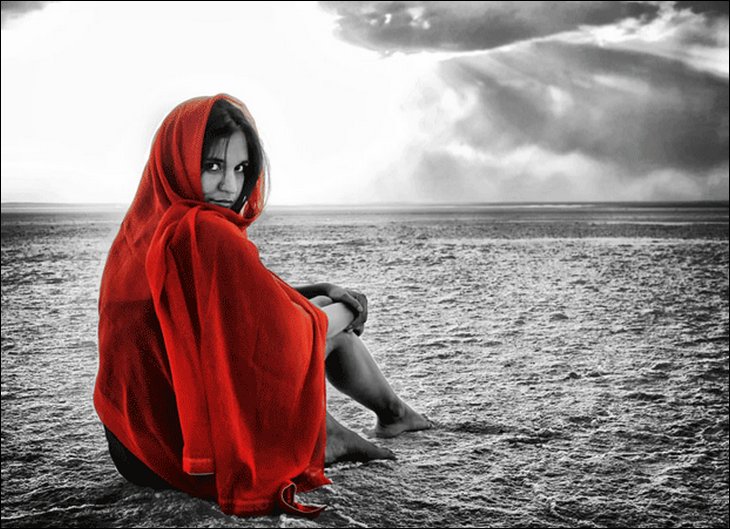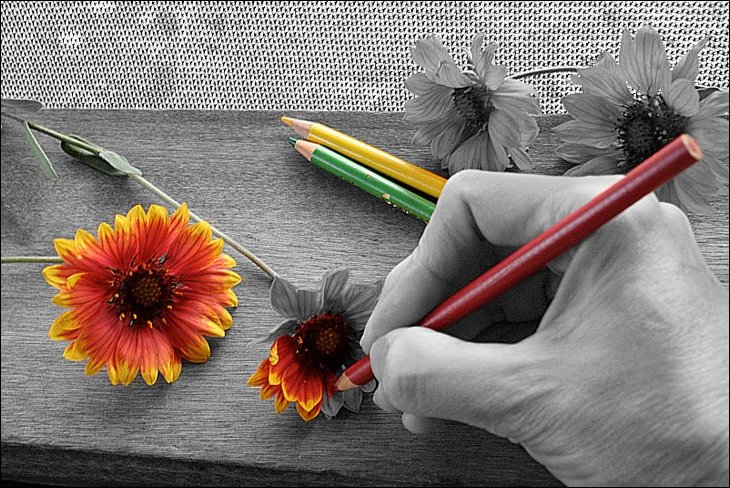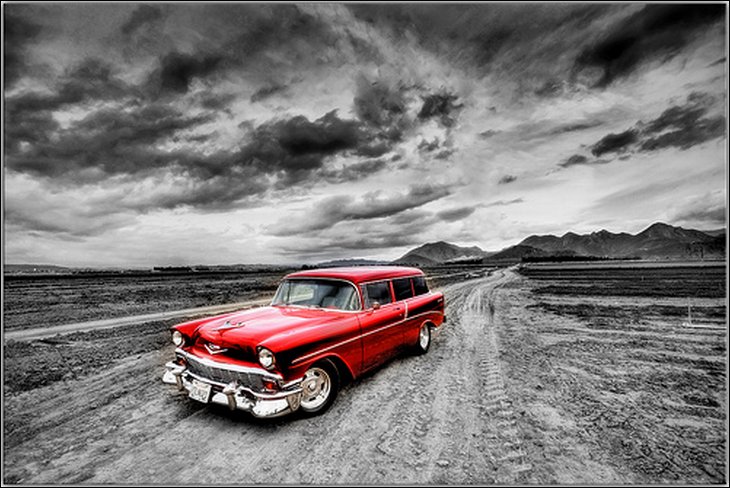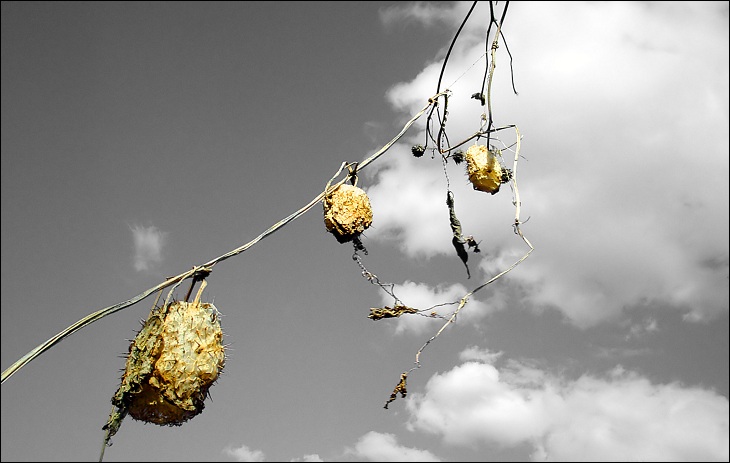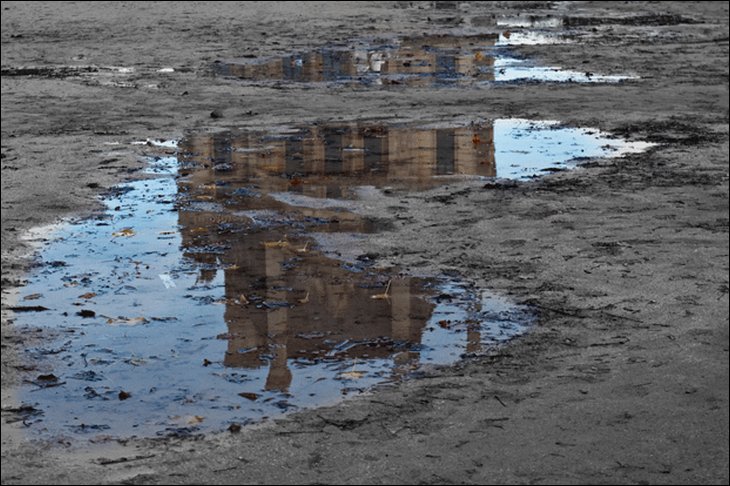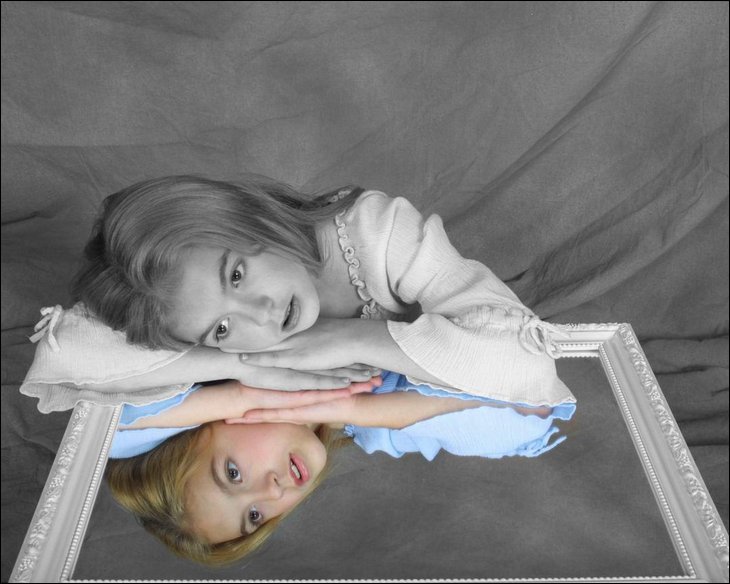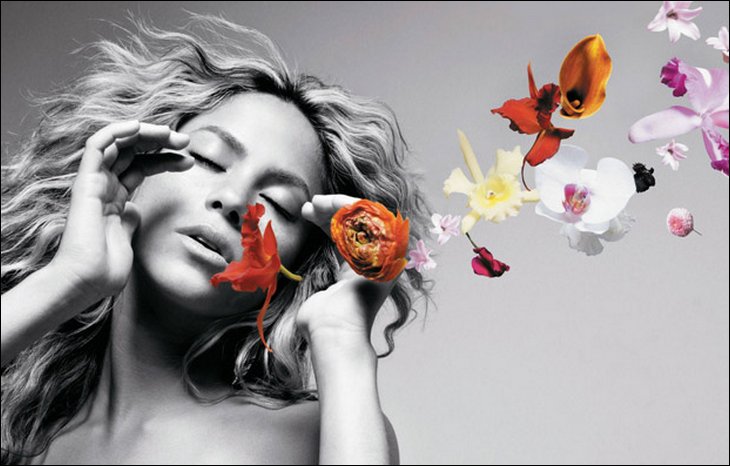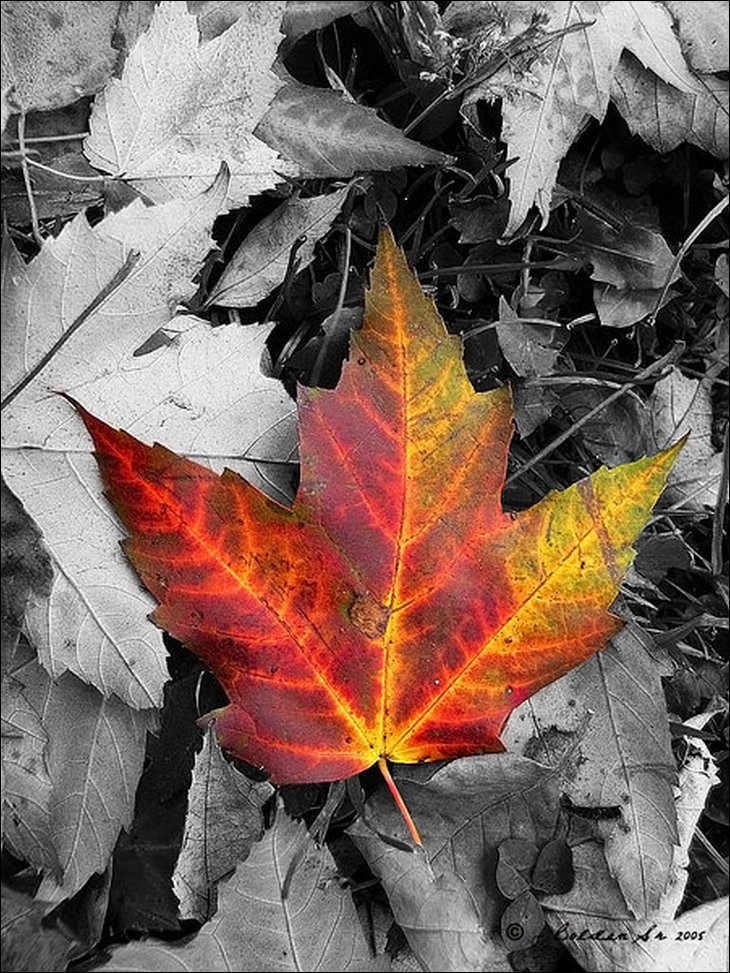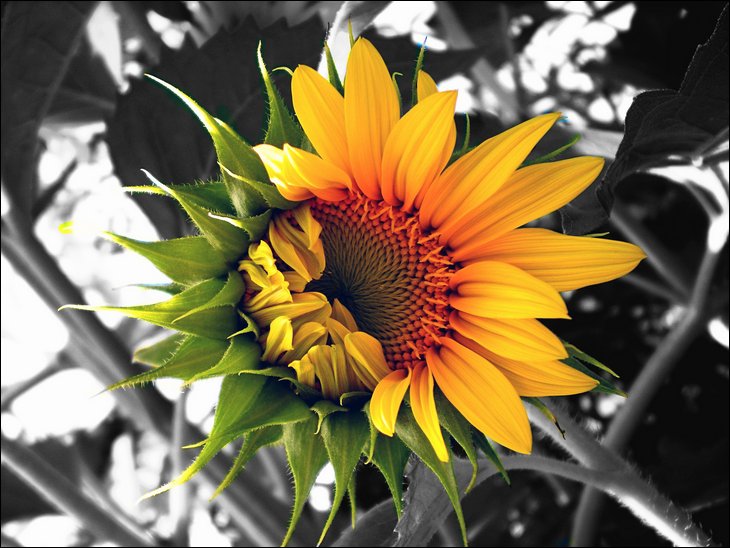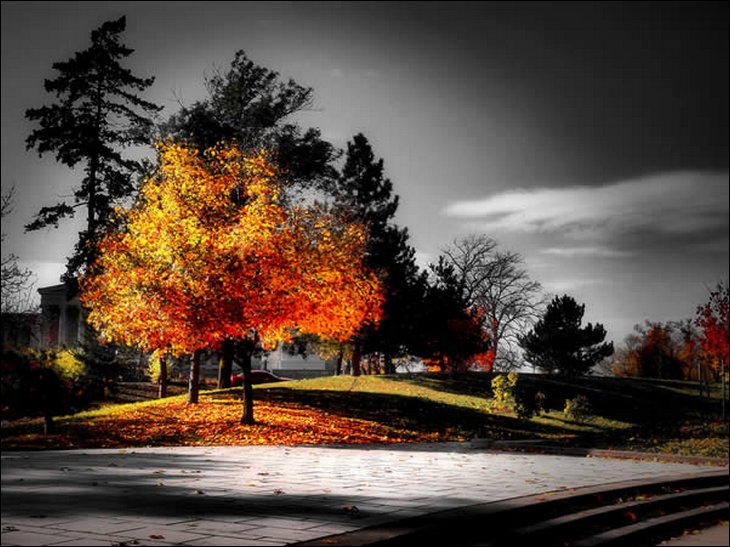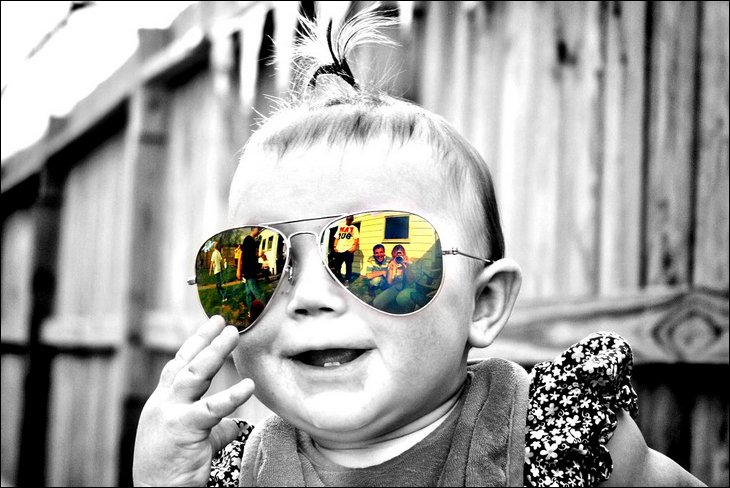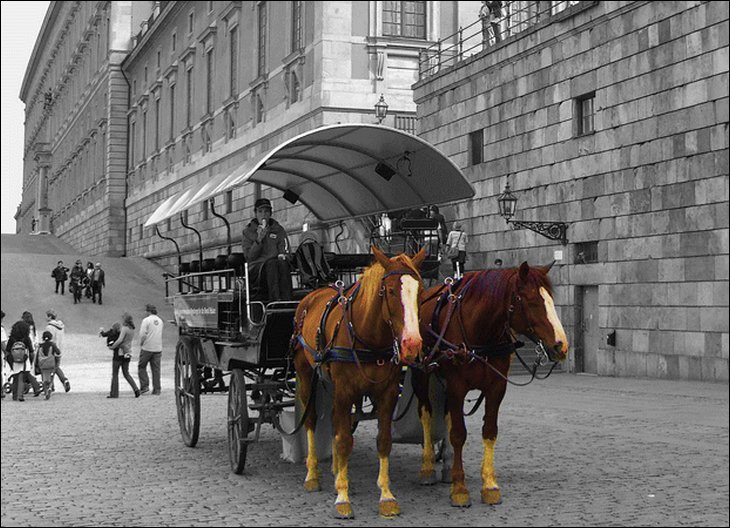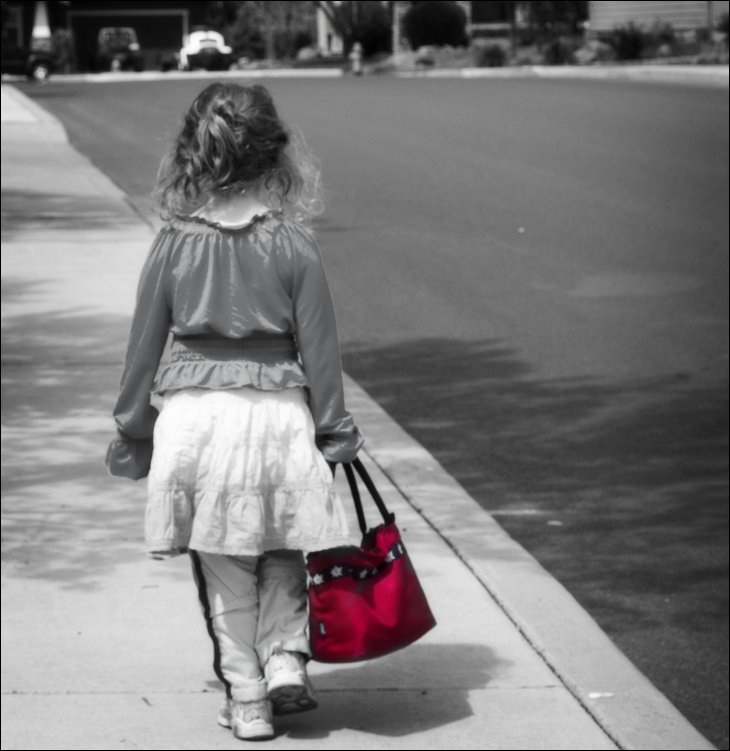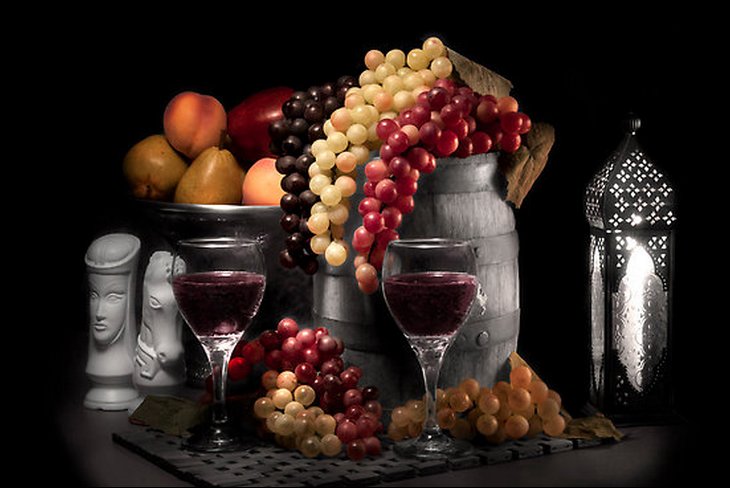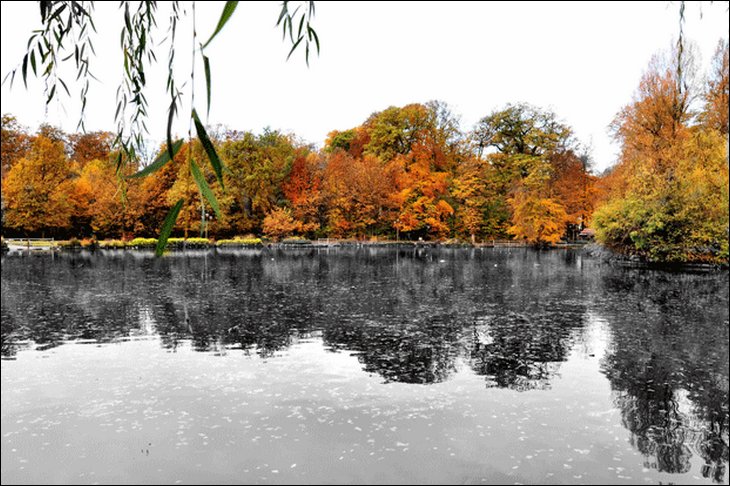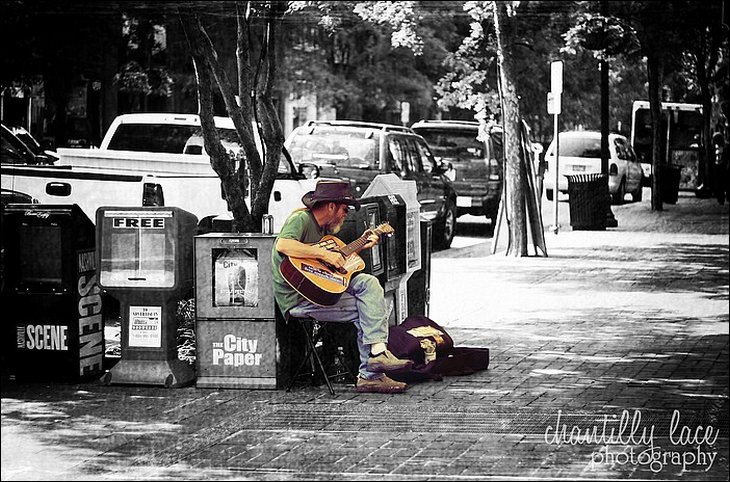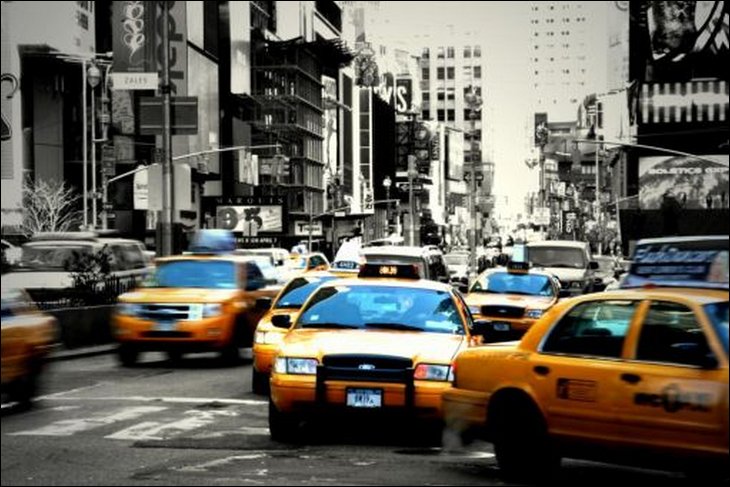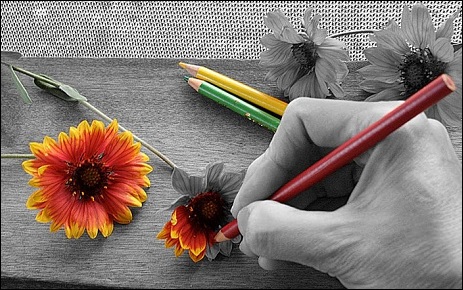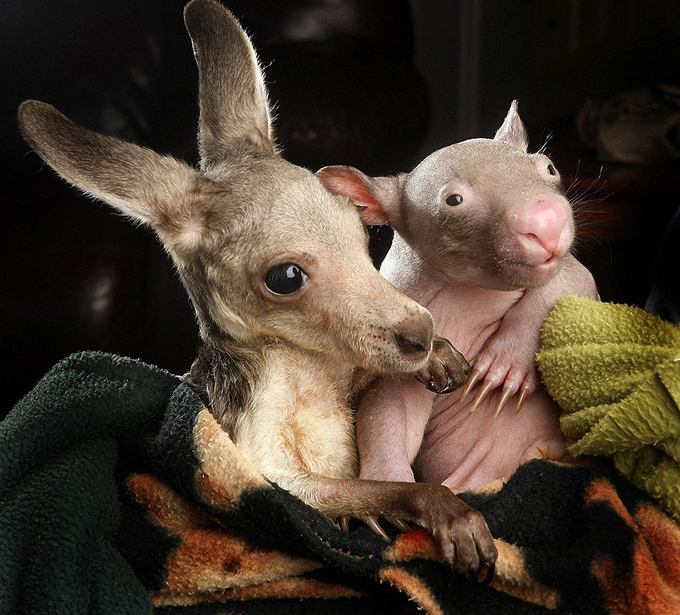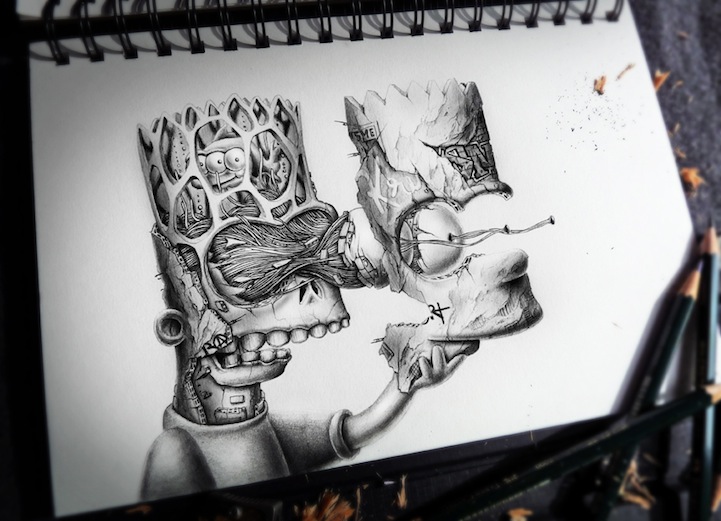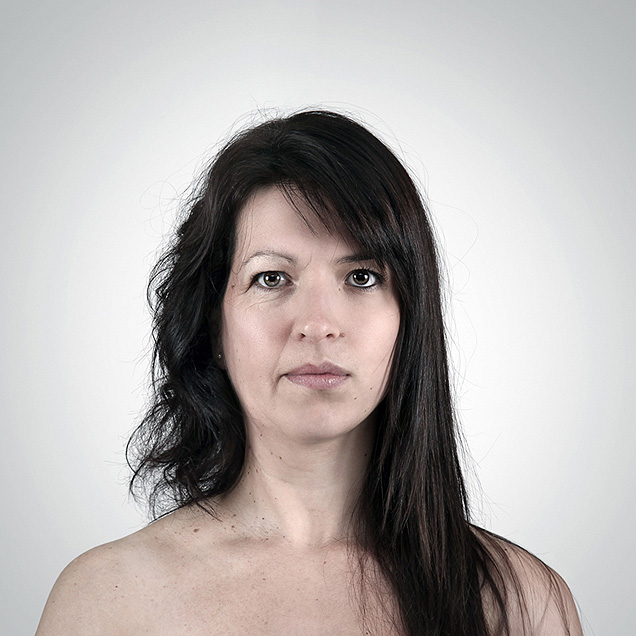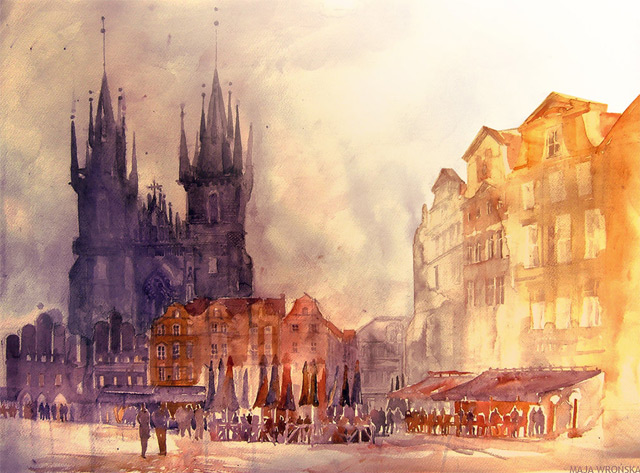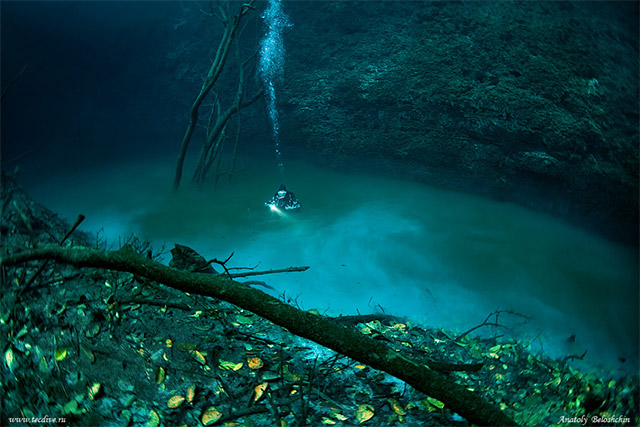Selective color is a post-processing technique where most of a photo is converted to black and white, but some parts are left in color. This is usually achieved by using layers and masks in photo editing software (Photoshop, SilverFast, Adobe Fireworks or The GIMP for example).
A common application for selective color is portraiture, to keep the eyes and sometimes the lips in color, against an otherwise black and white photograph. Small regions of color in an otherwise monochrome image immediately draw the viewer’s eye.
Landscape photography is another common application for this technique. Colorful leaves in an otherwise drab scene can breathe life into a photo. Of course the technique can be applied to any genre, but portraits and landscapes are the usual beneficiaries.
The clear differentiation between colors of the original color image can get lost in an automatic conversion process, because the resultant grey shades may be adjacent. In magazines and newspapers this often results in grey images, which do not have very detailed shades. SilverFast’s SC2G feature – Selective Color to Grey – can maintain the grey shade differentiation by controlling the conversion process. For all six colors – red, green, blue, cyan, magenta and yellow – the user can control into what shade of grey the color will be converted. Interactive monitoring of the whole conversion process assures resulting grey images as desired.
